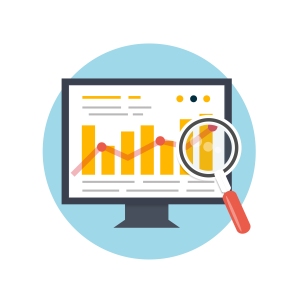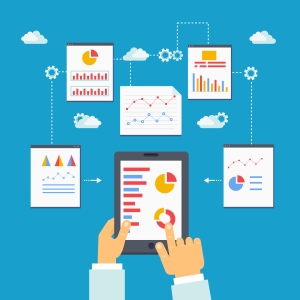There’s no doubt that technology plays a huge role in business today, including in accounting and finance. New technologies will always emerge, which can make it confusing for businesses to focus on the most relevant ones. Not all technology trends will necessarily apply to management accounting and finance; so it’s necessary to filter through and match solutions to your company’s unique needs.
IMA’s Technology Solutions & Practices (TS&P) Committee recently undertook some research and analysis to gather market literature and insight into a full slate of technology trends in an effort to filter through and find those most meaningful to management accountants. This short list of technology trends will serve as the basis for resources in order to understand these technologies and how they apply to management accountants. Here are the trends identified by the committee for 2015-2016.
 1. Business Intelligence and Analytics
1. Business Intelligence and Analytics
With mountains of both structured and unstructured Big Data growing daily, companies must glean meaning from the most relevant data to drive decision making. Powerful cloud-based tools exist to help companies perform advanced analytics (e.g., predictive and prescriptive analytics) to gain intelligence about the business and more insight into where it’s headed.
2. Data Governance
A sound data governance strategy sets the foundation for a company to ensure its information assets are accessible, usable for analysis, and of the highest quality and reliability. If data can’t be used or trusted, it’s almost worthless to the company. Data governance strategies, which are now growing in practice, help companies define the proper controls and monitoring systems to ensure access, utility, and quality.
3. Mobile Computing
As smartphones and tablets evolve, so will the environment they occupy. Your office will be virtual – wherever you can connect to the Internet.  Smartwatches and other wearable gadgets are also catching up in usability and allow for constant connectivity to your work space.
Smartwatches and other wearable gadgets are also catching up in usability and allow for constant connectivity to your work space.
4. Big Data
With the increase in mobile computing and growth of our digital footprint comes an increase in Big Data. You will need optimal analytics skills and tools to process such data efficiently and effectively to make appropriate business decisions.
5. Cloud
Today, nearly 50% of U.S. businesses use the cloud. You may already use it in your day-to-day work, but companies that don’t currently use cloud technology will be left behind this year. There are many options to choose from to fit your company’s specific needs.
6. Internet of Things
The “Internet of Things” (IoT) refers to the connection of more and more devices to the Internet, including household devices like thermostats and TVs and business tools like vehicle fleets. IoT generates both more Big Data (to be filtered through) and intelligence about the business, which helps bring greater efficiency and process improvement, among other benefits, to businesses.
7. Cyber and Physical Security
The increase in cybercrime over the past few years has proved how important it is to protect your company’s data. Not only will you need to improve your risk assessment and management tools, but you’ll also need to properly secure your physical infrastructure.
8. Smart Machines and Automation
This year will push smart machines ahead of the curve. With the ability to learn and adapt to their environment, there are no limits to what they can do. Companies should know how to use this ever-evolving artificial intelligence to their advantage.
Which trends are on your company’s radar? Have you had to make any changes to your systems or processes?
Written by Linda Devonish-Mills, CMA, CPA, CAE
Related Articles
Top 10 Strategic Technology Trends for 2015 – Forbes
Digital Darwinism: Thriving in the Face of Technology Change – IMA, ACCA
